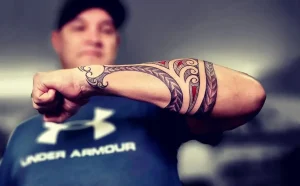Discover the secret meanings and unspoken rules behind forearm tattoos in the world of law enforcement. Uncover the truth now!
Law enforcement officers have long been known for their dedication, bravery, and commitment to keeping our communities safe. Over the years, tattoos have become a common form of self-expression and identity among police officers and other members of the criminal justice system. In recent years, a new trend has emerged – forearm tattoos.
Table of Contents
Trend Overview
In the past, tattoos among law enforcement officers were often discreet and hidden under their uniforms. However, there has been a noticeable shift towards more visible tattoos on the forearms. This trend reflects larger societal changes in attitudes towards body art, with tattoos becoming more accepted and celebrated as a form of personal expression.
Forearm tattoos among law enforcement officers come in a variety of designs and styles. Some officers opt for traditional symbols such as badges, emblems, or flags to showcase their allegiance to their department or country. Others choose more personal and artistic designs that reflect their individual interests, beliefs, or experiences.
Benefits of Forearm Tattoos for Law Enforcement
One of the key benefits of forearm tattoos for law enforcement officers is the sense of unity and camaraderie they can foster. Tattoos can serve as a form of visual identification, creating a bond between officers who share similar designs or symbols. This sense of unity can help build trust and solidarity within a department.

Forearm tattoos can also serve as powerful conversation starters with members of the community. Visible tattoos can humanize officers, sparking conversations about their personal interests, experiences, and beliefs. This can help bridge the gap between law enforcement and the community they serve, creating opportunities for connection and understanding.
From a practical standpoint, forearm tattoos are easily visible and can serve as a tool for identification. In situations where a quick visual reference is needed, such as during an emergency or in the field, tattoos can help distinguish officers and establish authority.
Challenges and Controversies
Despite the growing acceptance of tattoos in society, there are still challenges and controversies surrounding visible tattoos in law enforcement. Some argue that visible tattoos may undermine the professionalism and authority of officers, especially in more conservative or traditional settings.
Officers with visible tattoos may also face discrimination or bias based on their appearance. Stereotypes about tattoos being associated with criminality or unprofessionalism can impact how officers are perceived by the public and their colleagues.

Departmental policies and regulations regarding tattoos vary widely across different law enforcement agencies. Some departments have strict guidelines on the size, location, and content of tattoos, while others have more lenient policies. Navigating these regulations can be challenging for officers who wish to express themselves through body art.

Conclusion
The trend of forearm tattoos in law enforcement reflects a broader shift towards acceptance and celebration of body art as a form of self-expression. While there are challenges and controversies surrounding visible tattoos in the world of law enforcement, the benefits of forearm tattoos – in terms of unity, communication, and identification – cannot be ignored.
As society continues to evolve, it will be interesting to see how attitudes towards tattoos in law enforcement change and adapt. By exploring the role of body art in the criminal justice system, we can gain a deeper understanding of the complexities and nuances of this growing trend.






